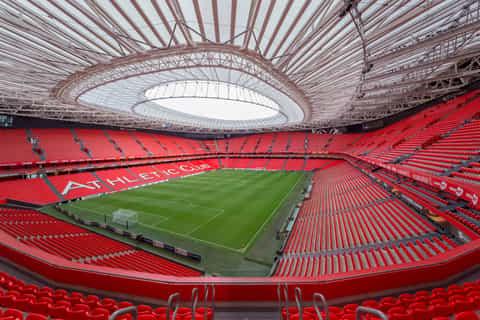The Significance of Estadio de San Mamés in Football History

Introduction
Estadio de San Mamés, located in Bilbao, Spain, is not just a football stadium; it’s a cultural landmark that represents the heart and soul of Athletic Club de Bilbao. Opened in 2013, this modern arena replaced the original San Mamés stadium which had served fans since 1913. Its importance lies in both its rich history and its role in the current landscape of European football, making it a focal point for sports enthusiasts around the globe.
Historical Context
The original Estadio de San Mamés, known affectionately as ‘La Catedral’, was renowned for its unique design and passionate atmosphere. It was the first stadium in Spain to receive the UEFA category four rating, a testament to its quality and significance in the world of football. The new stadium, which cost approximately €211 million, was constructed with sustainability in mind and features a retractable roof and an increased seating capacity of 53,332, ensuring it remains a premier venue in international sports.
Recent Developments
Since its opening, Estadio de San Mamés has hosted numerous high-profile events, including matches in the UEFA Euro 2020 tournament. The Spanish national team played in the stadium, showcasing its modern facilities and exceptional viewing experience. Additionally, concerts and other events are held at San Mamés, further embedding it into the community and making it a multipurpose venue.
Architectural Features
The design of Estadio de San Mamés was led by the architecture firm IDOM, aiming to combine cutting-edge technology with traditional elements reflecting Basque culture. The exterior is adorned with an impressive façade that lights up at night, providing a spectacular view for both those inside and outside the stadium. Inside, fans are treated to state-of-the-art amenities, ensuring comfort while supporting their team.
Conclusion
Estadio de San Mamés stands as a modern symbol of Basque pride and dedication to football. As Athletic Club de Bilbao continues to build on its legacy, the stadium remains central to its identity, uniting fans and players alike. Looking forward, the stadium is poised to host more significant events and contribute further to Bilbao’s reputation as a vibrant sporting city. For football fans, visiting San Mamés is not just about watching a match; it’s an experience steeped in history and culture.
